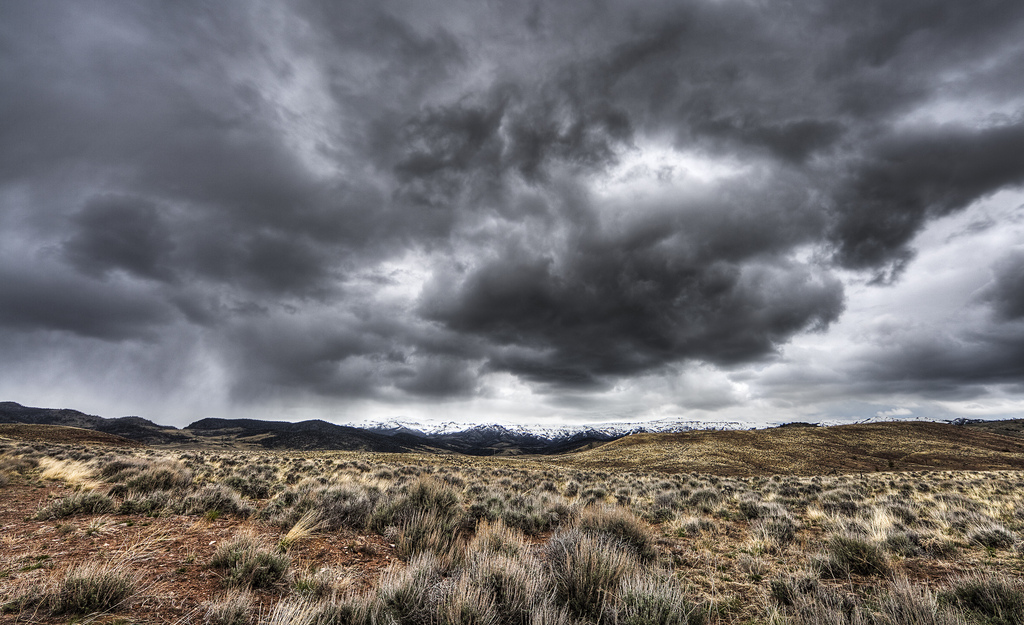Rainy Day? Microbes May Be At Play
A closer look at how some species of airborne bacteria can influence precipitation and lightning.

Bacteria are all around us—even in the atmosphere. Under the right wind conditions, air currents sweep up ultra-light microbes, which can drift as high as the stratosphere. For instance, a 2012 study appearing in the journal Proceedings of the National Academy of Sciences identified over 300 different families of bacteria floating amid the clouds.
As it turns out, these airborne microbes seem to influence the weather. Recently on Science Friday, we spoke with Cindy Morris, a microbial ecologist at the French National Institute for Agricultural Research in Avignon, France, and Athanasios Nenes, a professor of atmospheric sciences and chemical and biomolecular engineering at Georgia Tech in Atlanta, Georgia, to understand how microbes participate in precipitation.
For rain to form, millions of tiny water droplets must aggregate in clouds and become heavy enough to fall, according to Morris. And for that to happen, “in the temperate regions, you need a freezing process, where an ice crystal then will collide with droplets that are also cold, but they haven’t frozen yet. And this is how the heavy droplets can form,” said Morris.
But cloud tops aren’t at temperatures conducive to freezing. So how do they produce rain?
Water in clouds can turn to solid ice at higher temperatures with the help of a catalyst. Sometimes it’s a bit of soot or dust “that acts as a geometric template, aligning water molecules into a highly organized solid crystal,” writes Ferris Jabr in the New York Times Magazine.
And sometimes microbes can be that catalyst. For instance, the bacterium Pseudomonas syringae produces proteins that stimulate the production of ice crystals in a process called ice nucleation.
“It sort of kick starts the freezing process at temperatures warmer than it would happen,” said Morris, who studied that species, among others, in a 2015 paper on airborne bacteria.
[Two scientists discuss the evolutionary reasons why bacteria thrive in the clouds.]
A video filmed by Mark Martin, a microbiologist at the University of Puget Sound, demonstrates the freezing process. Just a drop of P. syringae added to a cooled vial of water instantly creates a crystalline lattice of ice.
According to researchers from the Max Planck Institute, the ice nucleation proteins in P. syringae consist of specific amino acid sequences that arrange the order of water molecules to create ice. The proteins also remove thermal energy from the water, helping along the freezing process.
Microbial ice-stimulating properties have become a useful commercial tool for industries that rely on snow—namely, ski resorts. Proteins extracted from P. syringae serve as an active ingredient in “artificial snow” inducers like Snomax, which some resorts use to powder their slopes.
The abundance of ice-active bacteria in the clouds may also influence the production and frequency of lightning, according to Morris. For example, reporting in 2012 in the journal Atmospheric Chemistry and Physics, researchers developed simulations of ice nucleation activity of P. syringae inside of thunderstorms. They found that more lightning was generated when bacterial ice nuclei were present than when they weren’t.
“So this is another interesting idea,” said Morris, “that perhaps biological ice nucleators—these microbial particles that can cause ice nucleation—could also have a role in lightning.”
Lauren J. Young was Science Friday’s digital producer. When she’s not shelving books as a library assistant, she’s adding to her impressive Pez dispenser collection.